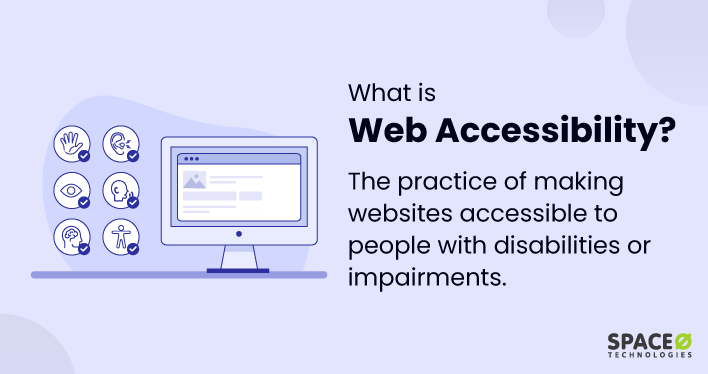Tube Rank: Your Guide to Video Success
Discover tips and insights for optimizing your video presence.
Web Accessibility: Because Everyone Deserves a Seat at the Digital Table
Empower everyone online! Discover why web accessibility is crucial for inclusivity and how it benefits us all. Join the movement!
Understanding Web Accessibility: What It Means and Why It Matters
Web accessibility refers to the practice of making websites usable for all individuals, including those with disabilities. This means designing and developing web content in a way that it can be easily accessed and understood by people with various disabilities, such as vision impairment, hearing loss, and cognitive limitations. The importance of web accessibility cannot be overstated, as it promotes inclusivity and ensures that everyone has equal access to information and services online. Accessible design principles can enhance user experience for all, not just those with disabilities.
Not only is understanding web accessibility crucial from a moral standpoint, but it is also a legal requirement in many regions. Organizations that neglect to prioritize accessibility may face legal consequences and lose potential customers. More importantly, embracing web accessibility can improve search engine optimization (SEO) efforts, as search engines favor sites that provide a better user experience. Implementing features such as alternative text for images, keyboard navigation, and appropriate color contrast can significantly benefit a wide range of users, making the web a more connected and accessible space for everyone.

Common Misconceptions About Web Accessibility Debunked
Web accessibility is often misunderstood, leading to several common misconceptions that can hinder inclusive design practices. One prevalent myth is that web accessibility is only about making websites usable for individuals with disabilities. While this is a critical aspect, accessibility benefits all users by enhancing the overall user experience. For instance, adhering to accessibility standards can improve site navigation and usability on various devices, making it easier for everyone, including those with temporary impairments, to access content more effectively.
Another common misconception is that achieving web accessibility requires extensive, complex changes that can be costly and time-consuming. However, many aspects of accessibility can be integrated into the design process without significant disruptions. Simple practices, such as using semantic HTML, providing text alternatives for images, and ensuring good color contrast, can substantially improve a website's accessibility at minimal cost. By prioritizing these practices from the outset, developers can create a more inclusive web experience without overhauling their existing designs.
Top Tools and Techniques for Enhancing Digital Accessibility
In today’s digital landscape, enhancing digital accessibility is crucial for ensuring that all users, regardless of their abilities, can access and engage with online content. One effective technique is the use of accessible design principles, which includes color contrast, text alternatives for images, and relational spacing. Additionally, tools like screen readers, which convert digital text into audio, can help users with visual impairments navigate websites more easily. Implementing semantic HTML elements, such as headings, lists, and landmarks, also makes it easier for these tools to interpret web pages, improving the overall user experience.
Another essential component in enhancing digital accessibility is regular testing and user feedback. Utilizing tools such as WAVE and axe can help identify accessibility issues within your website. Moreover, conducting user tests with individuals who have disabilities offers invaluable insights, ensuring that your content meets the needs of all users. By prioritizing accessibility from the outset and continually evaluating your practices, you can foster an inclusive online environment that is welcoming to everyone.